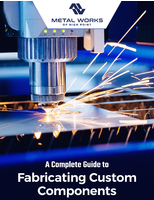Orbital Forming Machine assembles non-rounds.
Press Release Summary:
 Benchtop Model T-321 can flare oval, square, rectangular, D- and Double-D shaped pins, posts, and shafts. Non-round machined, semi-pierced, diecast, or molded tabs and bosses can be formed to secure mating parts. Form tools on machine maintain constant line contact with workpiece without intermittent peening motion. Speed and heading pressure are infinitely adjustable. Work stroke is selected for repeat depth control in .001 in. increments.
Benchtop Model T-321 can flare oval, square, rectangular, D- and Double-D shaped pins, posts, and shafts. Non-round machined, semi-pierced, diecast, or molded tabs and bosses can be formed to secure mating parts. Form tools on machine maintain constant line contact with workpiece without intermittent peening motion. Speed and heading pressure are infinitely adjustable. Work stroke is selected for repeat depth control in .001 in. increments.Original Press Release:
Assembling Non-Rounds
The ability to flare oval, square, rectangular, D- and Double-D shaped pins, posts, and shafts is another advantage of an Orbital Forming Machine. The Taumel Bench top model T-321 forms a double-D shaft to secure the latch, providing its specific orientation to the lock body (see photograph).
Non-round machined, semi-pierced, diecast or molded tabs and bosses can be formed to secure the mating parts. Orbital Forming can eliminate the need for separate hardware or loose fasteners. Blanked or diecast ridges, bosses and integral projections of malleable material, including many thermoplastics, can be formed out to anchor components in position. Bent-up tabs on a stamped mounting plate can be designed as spacers that fit through matching holes in a mating cover plate. These square or rectangular tabs are then flared to secure the assembly in a single pass on a multi-point orbital forming machine.
Holes in D or double-D configuration can be blanked in a plate to provide specific parts orientation. Shafts or tubes with the matching oval, D or double-D shape protrude through the plate and are headed to secure the parts both in place and in the correct direction.
The orbiting but non-spinning form tools on the Taumel machine maintain a constant line contact with the work piece, without the intermittent peening motion and without any noise or vibration. The orbital forming process allows the application of larger, controlled heading forces for increased material displacement and will yield higher torque strengths.
Precisely controlled cycle time (speed) and heading pressure can be selected for the specific assembly task and are infinitely adjustable. The work stroke is selected on the micrometer dial for repeat depth control in .001" increments. This makes it possible to form either fixed joints with increased torque strength or smoothly moving swing and floating joints that can also have the exact amount of required resistance built-in.




